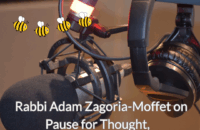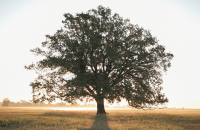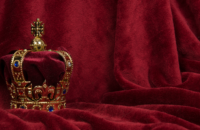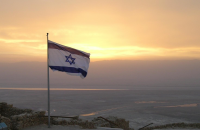UK Taskforce Trip – Issues Relating to Arab Citizens in Israel
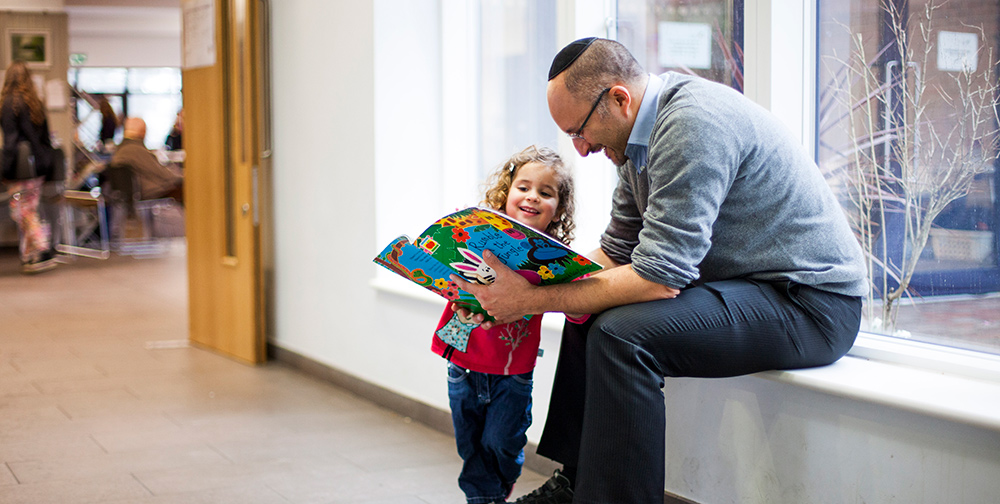
Sarah saw the son whom Hagar the Egyptian had borne to Abraham playing. She said to Abraham, “Cast out that slave-woman and her son, for the son of that slave shall not share in the inheritance with my son Isaac.” Gen. 21:9-10
What if Sarah hadn’t cast out Abraham’s concubine, Hagar? What if the two women who bore Abraham’s children, Isaac and Ishmael, cooperated in their children’s upbringing rather than competed for Abraham’s attention? What if the Torah had not set up an eternal enmity between children of Isaac and the children of Ishmael?
From 5-9 February 2017, I participated in a study trip with UK Task Force on Issues Relating to Arab Citizens in Israel. A small group of British Jewish communal leaders embarked on a four day trip to Beersheva to learn about issues concerning Israeli Bedouins. We heard from Arab Israeli leaders, government officials, educational leaders and Bedouin community members. Though one Israeli compared our trip to Birthright, in fact it was a trip for people with knowledge of Israel’s challenges and committed to its future.
Historians date Bedouin life in the Negev to the 13th century. In the 18th and 19th centuries nomadic Bedouins adopted a more settled way of life and established villages in the Negev. Today, there are approximately 300,000 Bedouins living in towns and villages comprising 3.5% of the Israeli population with the Arab population of Israel comprising 21% of Israel’s population as a whole.
A survey of the Israeli Bedouin educational landscape provides a snapshot of some of the challenges facing the community. Prior to 2000 there were no schools or other basic municipal services in “unrecognised villages” (Bedouins living on land whose ownership is disputed by Israeli government). That year Israel’s High Court of Justice separated the right to education from the disputes over land rights. Amongst the unrecognised villages some villages have a local school, while children in other unrecognised villages are forced to travel to neighboring locales for their education. In Az-Za’arura near Beersheva we listened to several village leaders describe their village’s infrastructure challenges while a young boy expertly served coffee to our group of twenty. His father said that there was not a school in the village and, because the boy had hurt his leg, he could not travel to school. It is clear that educational attainment is hard won by the children and their families who are dedicated to their studies and where there is outside assistance to keep academically weaker students on track.
Twenty percent of Bedouin students matriculate from high school prepared to enter higher education. This is an increase from 2001 when the rate was 12%. Of those who do enter higher education most students are women where matriculation rates have risen from 13% in 2001 to 30% in 2014; three times higher than Bedouin men. In 2014, the dropout rate for Bedouin students was 36% compared to 22% for all Arab students and 16% for the entire Israeli population.
We sat in the Hagar school’s library/bomb shelter, decorated like the bow of a ship, where we learned about the school’s mission and ethos from the Jewish head teacher and the Arab head of the parents’ committee. Founded in 2007 the Hagar school’s mission is to engage Jewish and Arab children to study in a bilingual coexistence educational model. They say on their website: “Hagar’s students participate in projects and conversations that guide them not only to think deeply about their own identities, but also to find the common threads that bind us all together.” At the school, Jewish and Arab children study in both Hebrew and Arabic with Jewish and Arab teachers. Asked about the school’s name, the leaders told us that the children study the national narratives of both Jewish and Arab peoples and through the lens of the character of Hagar. Hagar models the idea of national and personal stories which can be told from different points of view. The school is named Hagar because in both Jewish and Arabic culture she represents a person who struggles.
Israel is undergoing a significant demographic transformation; the Israeli Arab and Haredi sectors will soon become half of the population. In a June 2015 speech, Israel’s President, Reuven Rivlin promoted the concept of a shared society amongst all Israelis: secular Jews, religious Jews, Haredim and Arabs. President Rivlin said: “If we desire to live with the vision of a Jewish and democratic state as our life’s dream and our heart’s desire, then we need to look bravely at this reality. This should be done together, out of a deep commitment to find the answers to these questions, out of a readiness to draw together all the tribes of Israel, with a shared vision of Israeli hope.”
The Torah teaches that Sarah, seeking to protect her family from her rival, banished Hagar from her household and into the desert. Unlike Sarah, we cannot just chuck out people who are different than us or those who make us uncomfortable: it is neither just, nor legal. The narrative of the historic enmity between Sarah and Hagar must change and, going forward, Arab and Jewish Israelis and those who care about Israel in the Diaspora must build towards hope and cooperating towards a shared future together. It is the only way to bring peace between all of Abraham’s children.
Rabbi Daniella Kolodny is the Rabbinical Development Consultant at Masorti Judaism.

